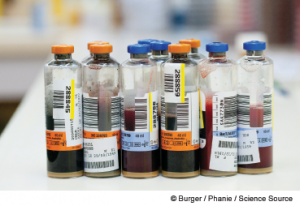
Explore This Issue
ACEP Now: Vol 33 – No 09 – September 2014Your last patient on a shift is a 55-year-old well-appearing woman with fever and cough in whom you suspect community-acquired pneumonia. As she steps in to draw labs, your nurse asks you, “Doc, two sets of cultures, right?”
In 2010, 4.1 percent of emergency department patients received blood culture testing.1 Each set of blood cultures costs $28 to process, with additional costs for microscopy and pathogen identification if there is growth, amounting to more than $151 million in annual medical costs based on Medicare reimbursement rates (a low estimate as many insurers and the uninsured are charged more than Medicare reimbursement rates).2
Blood cultures test for bacteremia, a condition associated with high mortality. However, they are frequently ordered on patients with clinical diagnoses for which they add little value. The true-positive rate of blood cultures based on prospective studies is as low as 4.1 percent to 7 percent.3 Up to 40 percent of positive blood cultures are false-positive from contaminants, resulting in prolonged hospital stays, avoidable testing (such as repeat cultures and echocardiograms), and antibiotic use. False-positive blood cultures are associated with three to five day increases in hospital length of stay and $4,400 to $8,800 in additional costs compared with true negatives.4,5 without culture data.
The true-positive rate of blood cultures based on prospective studies is as low as 4.1 percent to 7 percent. Up to 40 percent of positive blood cultures are
false positive.
Common Clinical Scenarios in Which Blood Cultures Are Unnecessary
Patients with community-acquired pneumonia. These patients should not routinely receive blood culture testing. Per the 2009 ACEP Clinical Policy, “Critical Issues in the Management of Adult Patients with Community-Acquired Pneumonia,” patients who do not require admission to the ICU and are not immunocompromised (eg, leukopenia, chronic alcohol abuse, liver disease, or steroids) are at low risk for bacteremia.6 Positive blood cultures rarely change management in pneumonia; retrospective studies document that only 0.4 percent to 3.4 percent of patients had antibiotic coverage changed.7 While the Centers for Medicare & Medicare Services (CMS) and The Joint Commission previously required blood cultures be drawn in the ED prior to administration of antibiotics as a pneumonia quality measure, this has been retired as of Jan. 1, 2014. The same is true for children. The Pediatric Infectious Diseases Society and the Infectious Diseases Society of America discourage routine blood cultures in their clinical practice guidelines.8
Pages: 1 2 3 4 | Single Page








2 Responses to “Blood Culture Testing: Send Samples Selectively to Lower Costs, Medico-Legal Risk”
October 4, 2014
CuloochGreat article!
In future versions would be useful to discuss the cost of false positive cultures (usually $4000-7000 per false positive in a hospitalized patient)
Also it is not so important whether or not a culture is positive but rather how often does it change management. While 4% of ED drawn blood cultures may be positive (and half of those being false positives) a positive culture almost never prompts a change in abx. When it does, it is almost always in a immunosuppressed patient orthose with severe sepsis/septic shock
June 10, 2015
Delores LyonWow, I had no idea that blood cultures could be so inaccurate. With a false positive testing rate of 40%, that is a lot of unnecessary follow up. In my opinion, if I was sick for some reason, I would probably want my doctor to forego something like this. The last thing I want is unnecessary medical bills.